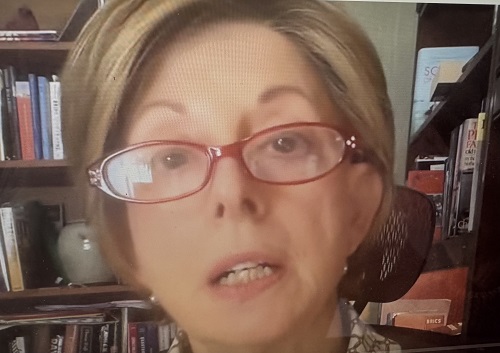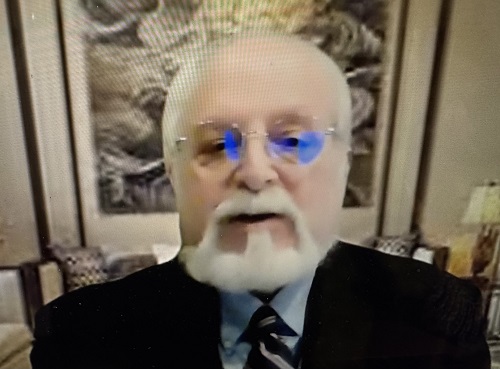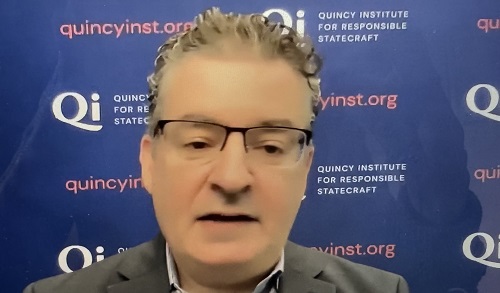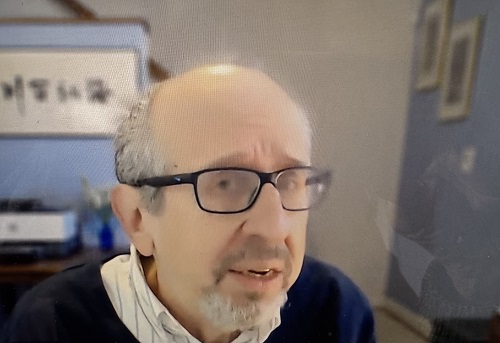
Re-Kindling the US-China Science & Technology Relationship
By Elaine Pasquini

Caroline Wagner.
Washington: After months of negotiations and discussions, on December 13, 2024, the United States and China signed a five-year amended Science and Technology Agreement (STA). Created to cultivate cooperation between the two countries, it was originally negotiated in 1979 between US President Jimmy Carter, who died last year at the age of 100, and Deng Xiaoping, leader of the People’s Republic of China from 1978 to 1989, who passed away in 1997 at the age of 92.
The Quincy Institute for Responsible Statecraft tackled the challenges and opportunities of the newly updated accord in a virtual discussion on January 7, 2025.
“This was really one of the initial pillars of the US-China relationship beginning with the opening to China in the 1970s,” said Marcus Stanley, director of studies at the Quincy Institute. “The current renewal of the STA continues a long tradition, but in light of the tensions in the US-China relationship this kind of cooperation has become controversial in a way that almost never was before.”
Some lawmakers on Capitol Hill, however, criticized the renewal of this collaboration, based on arguments that China was benefiting too much from this cooperation with the United States. With a new administration in Washington now, “I think we can expect this to be a continuing area of debate,” Stanley predicted.
Mark Cohen, a technology consultant to the Asia Society, previously served as the first representative to China for the US Patent and Trademark Office (USPTO), which has the largest team of stem-educated people in the US government – roughly about 10,000 scientists, engineers, and service patent examiners.
Cohen criticized the STA for being “negotiated in secret,” which “gives rise to suspicion,” noting that it was executed in the waning days of the Biden administration without the full text being released to the public.

Denis Simon
Despite these concerns, however, Cohen is “a strong believer in the importance of renewing the STA… not only for the planet and American science, but it is an opportunity to expand intellectual property and other protections.”
A revised STA could help to modernize US scientific collaboration, not only with China but with other global partners, he continued. Better implementation could also ensure that the “US remains internationally engaged which is indeed where some of our best research occurs.”
The focus now, however, is to handle this with a thoughtful bureaucracy, thinking strategically with greater transparency, greater oversight, and reporting so we know what we are getting into, he said, “and frankly we’ll get a lot of respect out of China for handling it better. The STA is a very valuable tool because it is a little bit de-linked from some of the other trade narratives.”
Denis Simon, a non-resident fellow at the Quincy Institute and a senior lecturer at Duke University, is also actively involved in the US-China Higher Education Exchange Discussion, which looks at the collaboration between universities and scientists on both sides of the Pacific.
Since the previous STA was put in place during an entirely different international political and economic environment, Simon pointed out “it did not address many of the key issues affecting bilateral science and technical cooperation, such as data security and privacy, personal security, reciprocity, and intellectual property rights ownership issues.” “When the original agreement was signed China had just emerged from the turbulence of the cultural revolution, and by many assessments, the country was 20 to 25 years behind the United States in most of the important fields in science and technology.”

Marcus Stanley
Today, he noted, the complaints are that “somehow, someway China has gotten the best of the deal in terms of the science and technology aspects; but, by all accounts, the US cooperative relationship with China and science and technology has been a great success. The US experience has served as a model or as a guidepost for several important developments in China.”
That recognized, nevertheless, Simon is pleased an agreement is in place because “not only does it carry with it symbolic importance, namely, that it implies the blessing of both governments that S & T cooperation is a good thing, but it also can serve as an effective mechanism for rebuilding trust between the two countries. Suffice to say, there is no global challenge issue out there whose meaningful solution can be found without substantial cooperation and collaboration between the United States and China.”
John Glenn School of Public Affairs faculty member Caroline Wagner noted that early on the cooperative relationship between the US and China was quite asymmetrical. The US was the world power in science and technology and the US looked at collaboration with China as a “magnanimous kind of opening up and giving this wonderful resource to an aspiring nation.”

Mark Cohen
China learned quickly and established a number of important policy actions that built the underlying support for a science and technology network including the patent system, research and development spending, and encouraging their researchers to go abroad to study, work and learn from the best in the world, she noted.
“China really accomplished something very unique,” Wagner stated. “I think we need to adjust our own understanding and expectations in light of that, and we need to be much more strategic about it rather than closing up and trying to protect ourselves. We need to run faster, be more aggressive, and be more strategic.”
Originally, the sense was that highly esteemed Western values, thought to be endemic to science, would be embraced by China, she explained. “But, instead, China developed a new model of how to develop a science system…even with an autocratic government.”
(Elaine Pasquini is a freelance journalist. Her reports appear in the Washington Report on Middle East Affairs and Nuze.Ink.)

